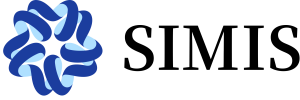Counting sheaves and objects in derived category in dimensions 2, 3, 4, 5 in 2023 Autumn
In gauge theory, the prominent examples of enumerative invariants are Donaldson polynomials and Seiberg-Witten invariants, which help to distinguish different smooth structures on 4 dimensional manifolds. In recent years, other 4-manifold invariants have been introduced by changing the gauge theory (the PDE’s and the “counting” problem) or, by changing the dimension, similar gauge theory invariants were defined on higher-dimensional manifolds. Notable examples include Donaldson-Thomas (DT) invariants for six-dimensional, Calabi-Yau, manifolds. The study of enumerative geometry (counting of algebraic subspaces) of complex surfaces and threefolds proved to be deeply related to physical structures, e.g. around Gopakumar-Vafa invariants (GV); Gromov-Witten invariants, DT, as well as Pandharipande-Thomas (PT) invariants; and their “motivic lifts". On the other hand, physical dualities in Gauge and String theory, such as Montonen-Olive duality and heterotic/Type II duality have also been a rich source of spectacular predictions about these counting invariants. An example of this is the modularity properties of GW or DT invariants which is proved mathematically in some cases, as suggested by the heterotic/Type II duality. Furthermore, in recent years, there has been enormous amount of activity to generalize these constructions to complex 4 folds and 5 folds. This course is aiming at setting background on geometry of moduli spaces of sheaves over algebraic surfaces, 3 folds, 4 folds and 5 folds. The course gives brief introduction to gauge theoretic foundations behind each enumerative theory in each case, and discusses, in detail, the techniques of enumerative algebraic geometry such as, construction of suitable obstruction theories, degeneration techniques, localization technique, wall-crossing in master space developed by Mochizuki, as well as motivic wall-crossing developed by Kontsevich-Soibelman and Joyce-Song in each dimension. Many examples will be discussed during the course and many comparisons between DT theory and GW theory will be discussed. This course can be regarded as part 2 of the earlier course on Gromov-Witten theory and Donaldson-Thomas theory last semester. We will review some of the background material on geometry of moduli spaces of sheaves, as well as topics covered from the last semester in the “GW and DT theory” course, then we spend an extensive amount of time on the book by Mochizuki on “Donaldson-Thomas type invariants for algebraic surfaces”, and further into the semester discuss how to generalize these constructions and use DT theory in order to count curves and surfaces in 3 folds, 4 folds and 5 folds.
Lecturer
Date
19th September ~ 14th December, 2023
Location
| Weekday | Time | Venue | Online | ID | Password |
|---|---|---|---|---|---|
| Tuesday,Thursday | 09:50 - 11:25 | A6-101 | ZOOM 04 | 482 240 1589 | BIMSA |
Audience
Graduate
Video Public
Yes
Notes Public
Yes
Language
English
Lecturer Intro
Artan Sheshmani is a Professor of pure Mathematics, specialized in Algebraic geometry, Enumerative and Derived Geometry, and Mathematics of String Theory. He joined BIMSA as a Professor in September 2023. Prior to BIMSA he was a senior personnel at Simons Collaboration Program on Homological Mirror Symmetry at Harvard University Center for Mathematical Sciences and Applications (CMSA) for 7 years, during a portion of which he was jointly an Associate Professor of Mathematics at Institut for Mathematik (formerly the Center for Quantum Geometry of Moduli Spaces) at Aarhus University in Denmark (2016-2022). He is working on geometry of moduli spaces of sheaves and curves from enumerative geometry point of view as well as studying their structural properties from derived geometry and geometric representation theory point of view.





